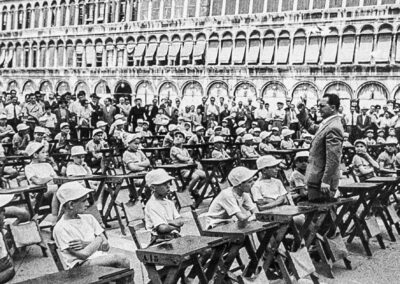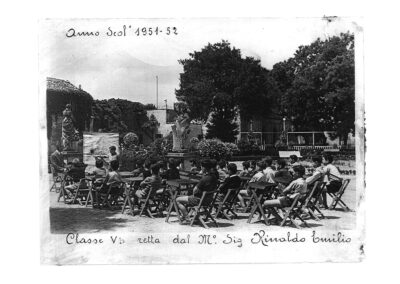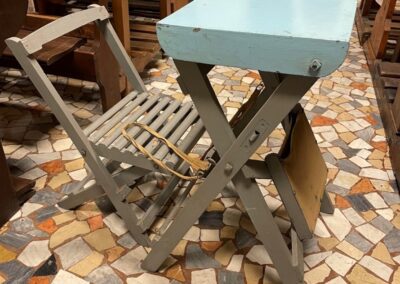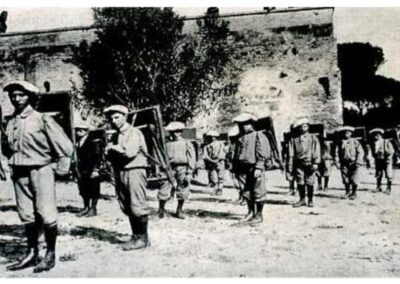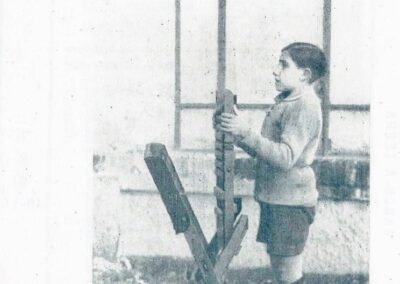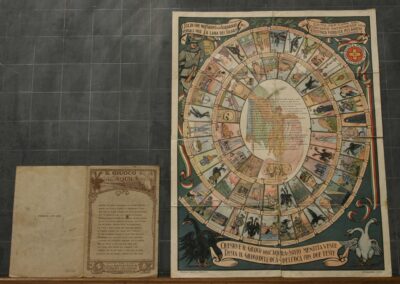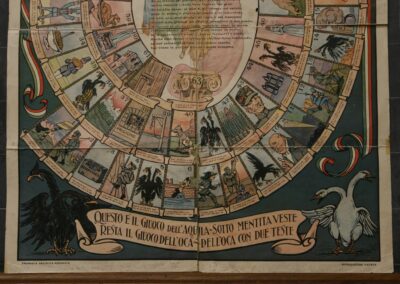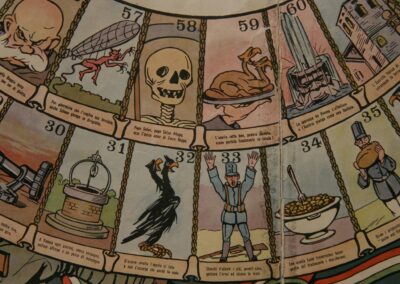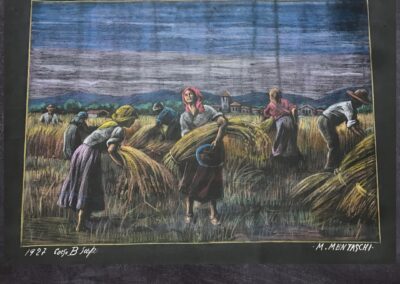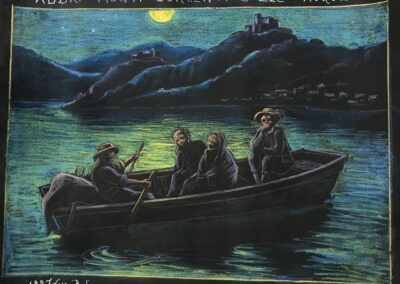Hidden Treasures
#HiddenTreasure of October
🖊️| Last month, we shared insights into the “Gioconda” backpack desks, a mobile open-air school inaugurated in Este, in the province of Padua, on May 24, 1922.
🏡| In the Museum, within the exhibit dedicated specifically to the “Gioconda,” visitors can admire several photographs of its students from the 1950s. This open-air school experience was suspended during the Second World War, later resumed in the postwar period until the mid-1960s.
👩🏫| The photographs capture lessons and educational trips taken by the students. Today, we present images depicting a study trip to Venice, during which the students held a class session in St. Mark’s Square (photos 1 and 2), as well as moments of outdoor study in the park of Este Castle (photos 3 and 4).
#HiddenTreasure of September
🎒| At the Museum of Education, we preserve some of the “backpack” desks that you see in the photo, crafted in the 1920s by master craftsman Ettore Bressan for the “Gioconda” mobile open-air school in Este.
☀️| Pedagogical historiography recognizes Padua’s pioneering role in the development of open-air schools: the “Raggio di Sole,” established in 1907, was the first in Italy and the second in Europe, following the “Waldschule” in Charlottenburg, Germany, in 1904. The founder, Padovan physician Alessandro Randi, described open-air schools as institutions striving to provide children with the best means of development.
👩🏫| The “Gioconda” mobile open-air school, founded in 1922 in a changed political, pedagogical, and cultural climate compared to the “Raggio di Sole,” selected its class locations based on weather, seasons, and the educational needs of the teacher.
📕| An interesting fact: in 1928, a booklet was prepared with instructions for setting up and dismantling the class. Inside, teachers were guided through “warning commands” (such as “desk on shoulder” or “desk on the ground”) and “execution orders” (“one,” “two,” “three,” “four”). These were essentially outdoor gymnastic exercises!
#HiddenTreasure of July
📜| The learning wall charts we present to you today are among the oldest preserved by the Museum!
These three panels are of German origin: during the second half of the 19th century, many educational aids in Italy were imported from either France or Germany because Italian companies were not yet fully equipped to produce them. Paravia would be one of the first Italian publishing houses to strongly promote the production and sale of educational materials (wall charts, alphabet charts, abacuses, and the famous globes) and maps and atlases starting in 1876.
🖼️| Learning wall charts were also used in other European countries, such as Sweden and Spain, where French production dominated the market. In late 19th-century Italian schools, which were poor in resources and funding, having illustrative panels to visually represent what was being learned was a great opportunity for the students! These children often came from deprived socio-cultural backgrounds and had limited experiences, so images provided teachers with a valuable aid to their explanations and a concrete way to show what was being studied.
📸| The images: Anatomical Wall Charts published by Dr. A. Fiedler, Professor of Anatomy in Dresden, 1886, published by G.B. Paravia and Co. (Sons of I. Vigliardi) Turin-Rome-Milan-Florence.
In the photos: Skeletal System (canvas paper and wood 125×50 cm), Muscular System (canvas paper and wood 125×50 cm), Nervous System and Sensory Organs (canvas paper and wood 125×50 cm).
#HiddenTreasure
🎲| The Game of the Goose and the Eagle, published by the Patronesses of the Milanese Public Assistance, was printed in 1916 during the First World War, at a time when the allied powers of the Triple Entente, to which Italy had joined, were fighting against the Central Powers of Germany and Austria-Hungary.
🦅| At the bottom of the game board, an inscription reads: ‘This is the game of the Eagle under disguised appearance. It remains the game of the Goose, of the Goose with two heads.’ This immediately declares, both through words and images, a patriotism that fosters contempt and hostility towards the enemies: Austria-Hungary, symbolized by the two-headed Eagle, must be defeated by Italian soldiers.
⚔️| It is the soldiers who are to be supported and aided: the game features the inscription ‘The money you have earned in the game, donate it for the soldiers’ wool.’ This board game reveals how games are often not neutral, but instead serve as vehicles for the ideas and ideologies imposed on children by the adult world.
#HiddenTreasure
✏️| These are two series of tables drawn in pastel on black cardboard, both made during the fascist era, after the Gentile Reform of 1923. ade between 1938 and 1940 by a young Istrian student from the Teacher Training Institute of Fiume.
The tables are beautiful, lively, and extremely precise, covering a variety of lesson topics: they depict animals, natural, domestic, and work environments, the phases of food production (bread, wine, honey, milk), trades, water and its uses, the arts, seasons, fire, means of transport, sports, modern weapons, and even historical scenes, celebrations like Carnival and Christmas, and scenes from novels such as Alessandro Manzoni’s “The Betrothed.”
🖼️| Through these exercises, the students at the Teacher Training Institute, established by the Gentile Reform, learned how to develop the ability to draw on the blackboard in order to visually represent study contents. Drawing was of great importance because teachers were expected to help students develop both technical and artistic skills.
😉| A thought for today’s teachers!

